-
 Bitcoin
Bitcoin $99,594.2189
-3.59% -
 Ethereum
Ethereum $2,188.5793
-9.00% -
 Tether USDt
Tether USDt $1.0001
-0.02% -
 XRP
XRP $1.9745
-5.82% -
 BNB
BNB $608.9511
-3.73% -
 Solana
Solana $130.4575
-5.93% -
 USDC
USDC $1.0000
0.01% -
 TRON
TRON $0.2637
-3.59% -
 Dogecoin
Dogecoin $0.1493
-5.97% -
 Cardano
Cardano $0.5322
-6.72% -
 Hyperliquid
Hyperliquid $33.9044
3.33% -
 Bitcoin Cash
Bitcoin Cash $449.6411
-5.46% -
 UNUS SED LEO
UNUS SED LEO $8.9629
0.43% -
 Sui
Sui $2.3943
-8.35% -
 Chainlink
Chainlink $11.4402
-7.83% -
 Stellar
Stellar $0.2241
-6.49% -
 Avalanche
Avalanche $16.1489
-4.24% -
 Toncoin
Toncoin $2.7182
-5.94% -
 Shiba Inu
Shiba Inu $0.0...01040
-5.72% -
 Litecoin
Litecoin $78.7882
-4.07% -
 Ethena USDe
Ethena USDe $1.0004
-0.01% -
 Hedera
Hedera $0.1305
-7.45% -
 Monero
Monero $297.0030
-5.32% -
 Dai
Dai $0.9997
-0.02% -
 Polkadot
Polkadot $3.1834
-6.03% -
 Bitget Token
Bitget Token $3.9788
-7.03% -
 Uniswap
Uniswap $6.1327
-10.62% -
 Pepe
Pepe $0.0...08689
-8.30% -
 Pi
Pi $0.4826
-9.65% -
 Aave
Aave $219.8043
-9.69%
Is it useful to combine EMA with trading volume? Is a large-volume breakthrough more reliable?
Combining EMA with trading volume enhances trend analysis; large-volume breakthroughs are more reliable, indicating strong market participation.
May 24, 2025 at 12:42 pm
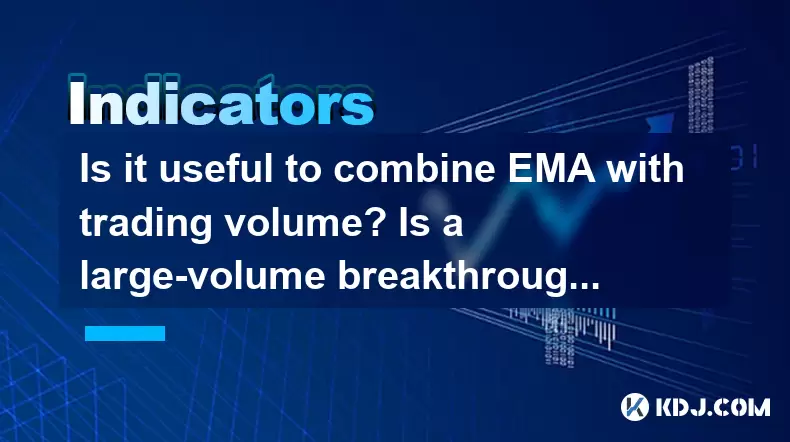
Is it useful to combine EMA with trading volume? Is a large-volume breakthrough more reliable?
Combining the Exponential Moving Average (EMA) with trading volume can significantly enhance a trader's ability to make informed decisions in the cryptocurrency market. The EMA, known for its sensitivity to recent price changes, provides a smoother representation of price trends compared to the Simple Moving Average (SMA). When paired with trading volume, which reflects the intensity of market activity, traders can gain deeper insights into market dynamics and potential price movements. This article explores the utility of combining EMA with trading volume and examines whether a large-volume breakthrough is more reliable in the context of cryptocurrency trading.
Understanding EMA and Its Role in Trading
The Exponential Moving Average (EMA) is a type of moving average that places a greater weight on the most recent data points. This makes it more responsive to new information, allowing traders to quickly identify potential trend changes. The formula for calculating EMA is:
[ \text{EMA}{\text{today}} = (\text{Price}{\text{today}} \times \text{Multiplier}) + (\text{EMA}_{\text{yesterday}} \times (1 - \text{Multiplier})) ]
Where the Multiplier is calculated as:
[ \text{Multiplier} = \frac{2}{\text{Period} + 1} ]
For example, a 20-day EMA would have a multiplier of 0.0952. This emphasis on recent prices helps traders to better understand the current market sentiment.
The Significance of Trading Volume
Trading volume represents the total number of shares or contracts traded within a specific timeframe. In the cryptocurrency market, high trading volume indicates strong interest and activity, which can validate price movements. Low volume, on the other hand, may suggest a lack of conviction behind a price change. By analyzing volume, traders can discern whether a price movement is supported by market participants.
Combining EMA and Trading Volume
When combining EMA with trading volume, traders can enhance their analysis in several ways:
Confirming Trend Strength: A rising EMA accompanied by increasing volume can confirm the strength of an uptrend. Conversely, a falling EMA with rising volume can confirm a downtrend.
Identifying Breakouts: A price breaking above or below an EMA with significant volume can signal a potential breakout. This combination suggests that the price movement is backed by substantial market interest.
Spotting Reversals: If the price approaches an EMA and the volume decreases, it might indicate a weakening trend and potential reversal.
Is a Large-Volume Breakthrough More Reliable?
A large-volume breakthrough is often considered more reliable because it indicates strong market participation and conviction behind the price movement. When a cryptocurrency price breaks through a key level (such as an EMA) with high volume, it suggests that many traders are actively buying or selling at that level, increasing the likelihood that the breakout will sustain.
Volume as a Confirmation Tool: High volume during a breakout can confirm that the move is not a false signal but rather a genuine shift in market sentiment.
Increased Liquidity: Large volume also means increased liquidity, which can make it easier for traders to enter or exit positions without significantly impacting the price.
Market Sentiment: A large-volume breakthrough reflects a consensus among a significant number of market participants, making the signal more trustworthy.
Practical Application: Using EMA and Volume in Trading
To effectively use EMA and volume in trading, consider the following steps:
Choose the Right EMA Periods: Depending on your trading style, select appropriate EMA periods. Short-term traders might use a 9-day or 21-day EMA, while long-term traders might prefer a 50-day or 200-day EMA.
Monitor Volume: Use a volume indicator to track changes in trading activity. Look for spikes in volume that coincide with price movements.
Analyze Breakouts: When a price breaks above or below an EMA, check the accompanying volume. A breakout with high volume is more likely to be reliable.
Confirm Trends: Use the combination of EMA direction and volume trends to confirm the strength of a trend. A rising EMA with increasing volume suggests a strong uptrend.
Watch for Divergences: If the price is moving in one direction but the volume is not supporting it, be cautious of potential reversals.
Case Study: EMA and Volume in Action
Consider a scenario where Bitcoin (BTC) is trading near a 50-day EMA. The price has been hovering around this level for several days with moderate volume. Suddenly, the price breaks above the 50-day EMA with a significant increase in volume. This large-volume breakthrough suggests a strong bullish signal. Traders might interpret this as a confirmation to enter long positions, expecting the price to continue its upward trajectory.
Common Pitfalls and How to Avoid Them
While combining EMA and volume can be powerful, there are potential pitfalls to be aware of:
False Breakouts: Even with high volume, breakouts can fail. Always use additional indicators or wait for confirmation before making trading decisions.
Overreliance on Indicators: No single indicator is foolproof. Use EMA and volume as part of a broader trading strategy that includes other technical and fundamental analysis.
Ignoring Market Context: The overall market environment can influence the reliability of signals. Always consider broader market trends and news events.
FAQs
Q: Can EMA and volume be used effectively in all market conditions?
A: While EMA and volume are versatile tools, their effectiveness can vary depending on market conditions. In highly volatile markets, EMA might generate more false signals, and volume spikes might be less reliable. In more stable markets, these indicators tend to be more consistent. Always adapt your strategy to the current market environment.
Q: How do different EMA periods affect the analysis when combined with volume?
A: Different EMA periods can provide insights into various time frames. Shorter EMA periods (e.g., 9-day or 21-day) are more sensitive to recent price changes and can be useful for short-term trading. Longer EMA periods (e.g., 50-day or 200-day) are better suited for identifying long-term trends. When combined with volume, shorter EMAs might highlight more immediate breakouts, while longer EMAs can confirm sustained trends.
Q: Are there any other indicators that can complement EMA and volume?
A: Yes, several other indicators can enhance the analysis when used alongside EMA and volume. The Relative Strength Index (RSI) can help identify overbought or oversold conditions, while the Moving Average Convergence Divergence (MACD) can provide additional trend confirmation. Combining these indicators can offer a more comprehensive view of market conditions.
Q: How can traders manage risk when using EMA and volume for trading decisions?
A: Risk management is crucial when using any trading strategy. Set stop-loss orders to limit potential losses, and consider using position sizing to manage the amount of capital at risk. Additionally, always diversify your portfolio to spread risk across different assets. Regularly review and adjust your strategy based on performance and market changes.
Disclaimer:info@kdj.com
The information provided is not trading advice. kdj.com does not assume any responsibility for any investments made based on the information provided in this article. Cryptocurrencies are highly volatile and it is highly recommended that you invest with caution after thorough research!
If you believe that the content used on this website infringes your copyright, please contact us immediately (info@kdj.com) and we will delete it promptly.
- Altcoins Under Pressure: Cardano and XRP Face Critical Tests
- 2025-06-23 12:25:12
- Rare Coin Fever in Wiltshire: Auctions, Errors, and Olympic Gold!
- 2025-06-23 12:25:12
- XRP Price Under Pressure: War Fears and Market Sentiment
- 2025-06-23 12:30:12
- HAI Token Private Key Leak: What Happened and How to Stay Safe
- 2025-06-23 12:45:12
- Texas Goes All In: Bitcoin Reserve Signals Big State Embrace
- 2025-06-23 12:45:12
- Pi Network's Price Plunge: Crash, Scammer Accusations, and What's Next?
- 2025-06-23 13:05:12
Related knowledge
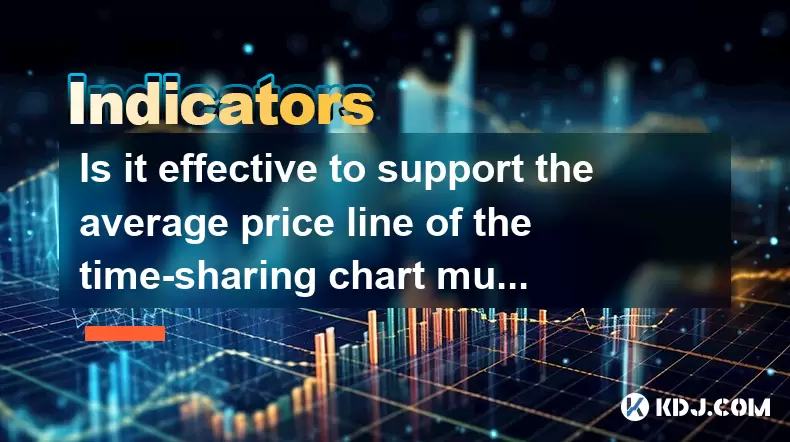
Is it effective to support the average price line of the time-sharing chart multiple times?
Jun 23,2025 at 01:36pm
Understanding the Average Price Line in Time-Sharing ChartsIn cryptocurrency trading, time-sharing charts refer to real-time price charts that display price movements over short intervals, often within a single trading day. Within these charts, the average price line, also known as the Volume Weighted Average Price (VWAP), is a commonly used technical i...
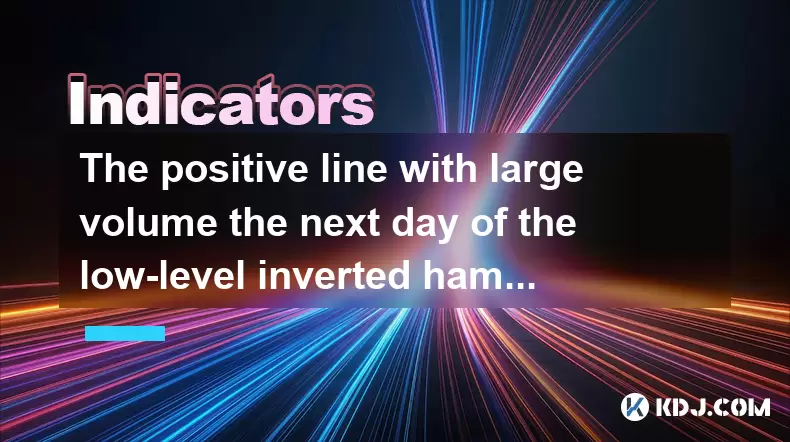
The positive line with large volume the next day of the low-level inverted hammer line confirms the reversal?
Jun 23,2025 at 01:21pm
Understanding the Low-Level Inverted Hammer LineThe inverted hammer line is a single candlestick pattern that typically appears at the end of a downtrend. It has a small real body near the bottom of the trading range and a long upper shadow, indicating that bulls attempted to push prices higher but were met with selling pressure. When this pattern forms...
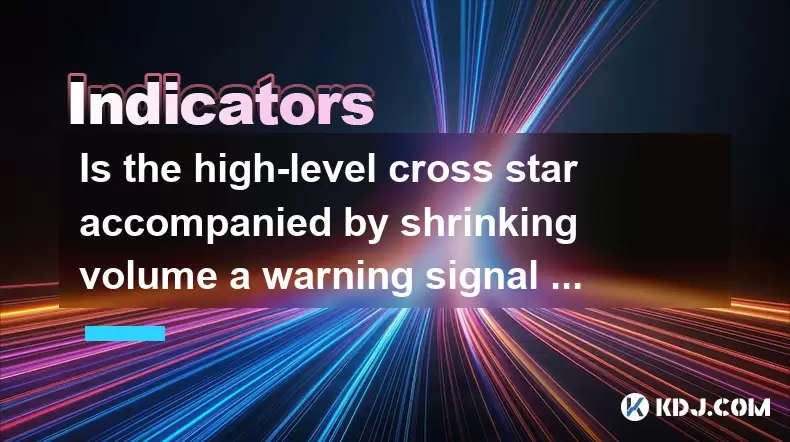
Is the high-level cross star accompanied by shrinking volume a warning signal of peaking?
Jun 23,2025 at 01:28pm
Understanding High-Level Cross Star PatternsIn the world of cryptocurrency trading, candlestick patterns are essential tools for technical analysis. One such pattern is the high-level cross star, which appears as a doji or near-doji candle at a significant resistance level. This pattern often indicates indecision in the market and can be interpreted as ...
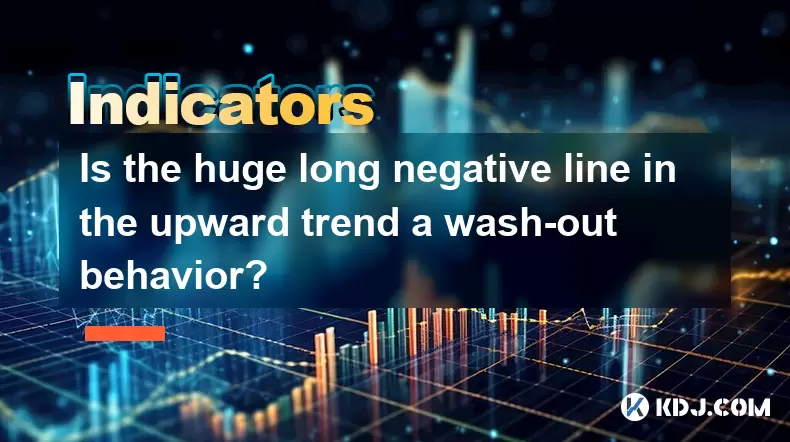
Is the huge long negative line in the upward trend a wash-out behavior?
Jun 23,2025 at 12:49pm
Understanding the Long Negative Candlestick in an Uprising TrendA long negative candlestick, often referred to as a long red or bearish candle, appearing during an upward trend can raise concerns among traders and investors. This pattern typically indicates a sudden and significant drop in price after a period of rising prices. It is often interpreted a...

Can the EXPMA golden cross stand on the 5-day line at the same time?
Jun 23,2025 at 11:42am
Understanding the EXPMA Indicator in Cryptocurrency TradingThe Exponential Moving Average (EXPMA) is a popular technical analysis tool used by cryptocurrency traders to identify trends and potential reversal points. Unlike simple moving averages, the EXPMA gives more weight to recent price data, making it more responsive to current market conditions. In...

Does the second surge in the RSI overbought zone induce more?
Jun 22,2025 at 08:35am
Understanding the RSI Overbought ZoneThe Relative Strength Index (RSI) is a momentum oscillator commonly used in technical analysis to measure the speed and change of price movements. It ranges from 0 to 100, with values above 70 typically considered overbought and values below 30 considered oversold. When the RSI enters the overbought zone for the firs...

Is it effective to support the average price line of the time-sharing chart multiple times?
Jun 23,2025 at 01:36pm
Understanding the Average Price Line in Time-Sharing ChartsIn cryptocurrency trading, time-sharing charts refer to real-time price charts that display price movements over short intervals, often within a single trading day. Within these charts, the average price line, also known as the Volume Weighted Average Price (VWAP), is a commonly used technical i...

The positive line with large volume the next day of the low-level inverted hammer line confirms the reversal?
Jun 23,2025 at 01:21pm
Understanding the Low-Level Inverted Hammer LineThe inverted hammer line is a single candlestick pattern that typically appears at the end of a downtrend. It has a small real body near the bottom of the trading range and a long upper shadow, indicating that bulls attempted to push prices higher but were met with selling pressure. When this pattern forms...

Is the high-level cross star accompanied by shrinking volume a warning signal of peaking?
Jun 23,2025 at 01:28pm
Understanding High-Level Cross Star PatternsIn the world of cryptocurrency trading, candlestick patterns are essential tools for technical analysis. One such pattern is the high-level cross star, which appears as a doji or near-doji candle at a significant resistance level. This pattern often indicates indecision in the market and can be interpreted as ...

Is the huge long negative line in the upward trend a wash-out behavior?
Jun 23,2025 at 12:49pm
Understanding the Long Negative Candlestick in an Uprising TrendA long negative candlestick, often referred to as a long red or bearish candle, appearing during an upward trend can raise concerns among traders and investors. This pattern typically indicates a sudden and significant drop in price after a period of rising prices. It is often interpreted a...

Can the EXPMA golden cross stand on the 5-day line at the same time?
Jun 23,2025 at 11:42am
Understanding the EXPMA Indicator in Cryptocurrency TradingThe Exponential Moving Average (EXPMA) is a popular technical analysis tool used by cryptocurrency traders to identify trends and potential reversal points. Unlike simple moving averages, the EXPMA gives more weight to recent price data, making it more responsive to current market conditions. In...

Does the second surge in the RSI overbought zone induce more?
Jun 22,2025 at 08:35am
Understanding the RSI Overbought ZoneThe Relative Strength Index (RSI) is a momentum oscillator commonly used in technical analysis to measure the speed and change of price movements. It ranges from 0 to 100, with values above 70 typically considered overbought and values below 30 considered oversold. When the RSI enters the overbought zone for the firs...
See all articles

























































































